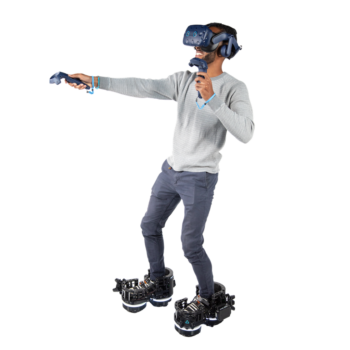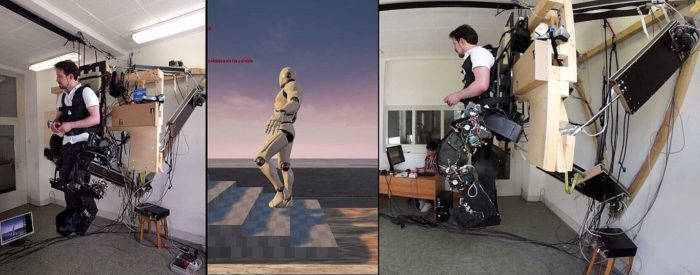
It’s too expensive and it’s not available yet, but there’s a startup company that says we’ll be able to walk in VR.
Ekto VR, a VR hardware startup, has invented a pair of boots that allow realistic walking in virtual environments with no risk of running into a wall or other obstacles.
The exact price hasn’t been announced yet, but with a potential starting cost of $15,000 dollars or more, the Ekto VR boots are currently aimed for enterprise use and should be available in the first half of 2022. An affordable customer version hasn’t been announced.
The company website states that Ekto VR is bridging the skills gap by simulating full-scale working environments, and their demo video shows some virtual onsite training.
The futuristic-looking boots fit over most regular shoes and use an array of motorized wheels on their underside which spin opposite to the user’s walking speed.
The boots initially allow the wearer to take several steps forward. This is supposed to help avoid motion sickness and provides the inner-ear cues that tell the user their body is accelerating forward.
“As far as the comments that we most receive in demos, people are almost utterly convinced- and, in some cases, utterly convinced that they are going to walk out of the room,” Brad Factor, founder and CEO of Ekto VR, told Digital Trends.
Ekto VR isn’t the first company to attempt to create a realistic walking experience in VR, sometimes called the endless walking problem or the locomotion interface challenge. Various companies and universities have been attempting the same thing since at least the 1980s.
Omnidirectional treadmills, boots, exoskeletons, and head-mounted displays that hack a user’s rapid eye movements to redirect their walking direction have all been used, but the VR industry hasn’t clearly settled on one solution as the best option.
For example, the Holotron, developed by physicist Marcel Reese, is a robotic exoskeleton prototype that’s suspended above the ground.
It lets you walk, run, and interact with your environment in virtual reality with possibly even more feedback than the Ekto VR boots, but it is much more cumbersome.
If you’re walking up a flight of steps, it will feel like it. If you knock into an object, the device provides tactile feedback as if you actually walked into a wall, a rock, or another obstacle.
For more information about the Holotron, check out this previous Hypergrid Business article.

Time will tell if the Ekto VR boots, or locomotion interface technology in general, will catch on with enterprise and regular consumer use.
This product and others like it could greatly increase the realism in certain enterprise applications, such as a commercial real estate client walking around a virtual version of a new building that’s being constructed.
For consumer use, gamers would get a far more compelling experience that’s closer to reality, with studies showing that subjects find a virtual reality environment more immersive when they move around it through virtual walking rather than teleporting between locations by using a handheld controller.
One 2004 study from Japan states that the sensation of walking affects the way our brains process distance and movement. This means our brains will be more likely to think what they’re perceiving is real.
Solving the walking problem is only one part of having a totally immersive VR experience. Simulating touch, taste, and smell are other areas that would need to be solved if VR is ultimately meant to create fully realistic virtual worlds.
- OpenAI’s new Point-E lets you generate 3D models with text - December 21, 2022
- Celebrity Cruises unveils virtual cruise experience - December 15, 2022
- Metaverse experiences could boost real world travel - December 12, 2022
